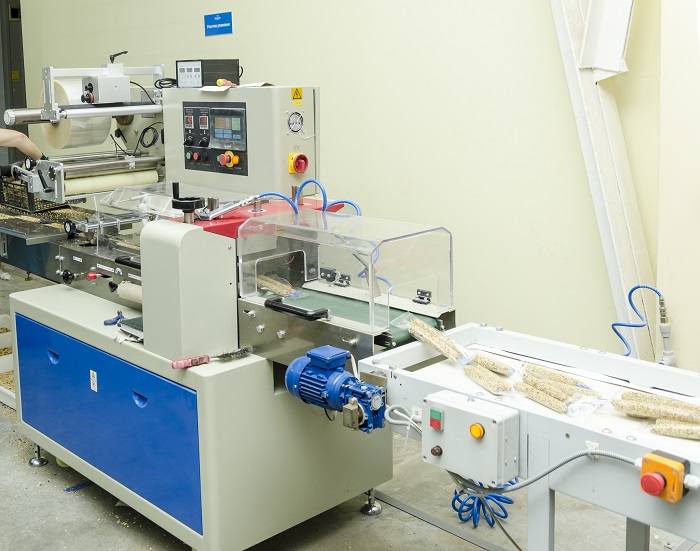In 2018, overall sales of the Ukraine pet food market climbed to UAH6 billion (US$235 million), up from UAH6.5 billion (US$254 million). That was a 40% increase over the previous year, driven by growing purchasing power of the local population and an expanding number of pet food producers.
Over the past few years, the pet food market to some extent has been following the economic trends in the country. In 2017, the average wage in Ukraine jumped by 37% compared to the previous year and, in 2018, by another 23%, the International Monetary Fund estimated. The country shows the fastest growth rate in average salary among all countries of Eastern Europe, and this means customers can afford to spend more on pet food.
“Just as before, price is the main factor in decision-making for customers, but the economic improvement brought a lot of money to the industry. In the B2C (business-to-consumer) segment, pet food of better quality primarily benefited from this trend,” commented Oleg Bilyuk, spokesperson for major Ukraine online pet food retailer E-Zoo. “Online sales of pet food in Ukraine show skyrocketing growth, and this drives more players to this market.”
Pet food leader Kormotech also on the rise
In 2018, Kormotech, Ukraine’s largest pet food producer, manufactured 37,000 metric tons of pet food, compared to 31,000 metric tons the previous year, said CEO Rostyslav Vovk. In value terms, sales jumped 33%, reaching UAH1.3 billion (US$51 million). Kormotech accounted for 34% of pet food sales in Ukraine in terms of volume and 21% in value, Vovk estimated. (See Figure 1.)
“Kormotech is the market leader now,” commented Evgeniy Berdennikov, a spokesperson for a local distribution company, MK Service. “The redistribution of market shares between Kormotech and its main competitor, Mars, happened when supplies [of a broad range of products, including pet food] from Russia were banned.” Mars was importing almost all its ingredients and other supplies from Russia, he said.

Figure 1. Kormotech has become the largest pet food company in Ukraine, overtaking multinationals like Nestle Purina and Mars.
Source: Ukraine State Fiscal Service [copyright]Watt Global Media 2019
Since the company doesn’t have any production capacity in Ukraine, it had to rebuild its supply chain to import products from Europe. While that was happening, Kormotech managed to strengthen its position in Ukraine’s market with the right product range policy, high-quality production and marketing support, Berdennikov added.
Increased demand for pet food of Ukraine origin
Import supplies for pet food from Russia were banned by Ukraine’s government in 2016 as a response to similar restrictions imposed earlier by the Russian government. In July 2019, the Ukrainian government extended the embargo until 31 December, 2020. These sanctions barred the way to Ukraine’s market for not only Mars but also several Russian companies that were exporting their products to Ukraine prior to 2016.
“The demand for pet food of Ukraine origin also supported new pet food manufacturers regularly emerging in the country,” Berdennikov said, adding that all in all, the share of pet food in MK Service’s order book has been gradually increasing during the past few years.
Eyes on global pet food market
Ukrainian pet food manufacturers harbor major expansion plans in the global market. In particular, Kormotech targets entering the top 50 global industry leaders, according to Vovk.
“To reach this target, Kormotech will develop its sales in Europe, Asia, North and South America, and Africa. The share of sales in export markets should be 45% by the end of 2023,” Vovk said.
In 2018, the company sold around 13% of its products outside Ukraine, and the company is set to expand production performance by launching a new pet food factory in Lithuania with a designed capacity of 20,000 metric tons.
“We chose this location because of its geographical advantages for our further expansion, particularly in the European market,” Vovk said. “In 2019, we are exporting our products to 24 countries including Chile, Sweden, the United Kingdom, Finland, the Netherlands, Estonia and France. In 2018, we also received permission to export our products to the U.S. and now Kormotech sells its products through Amazon.”
Another Ukraine pet food manufacturer, TM Priroda, is also poised to expand exports. The company is manufacturing 3,000 tons of pet food per year at a factory not far from Kharkiv, said Mikhail Kolosenko, production director. “We are putting a lot of effort to expand our international operations. We are already selling our products in Poland, Moldova and Georgia. We have a broad range, and currently we are working on introducing new products as well as optimizing pet food rations in terms of content of energy, vitamins, micronutrients and fiber.”

Another Ukraine pet food manufacturer, TM Priroda, is producing 3,000 tons of pet food a year and is also poised to expand exports. l Courtesy of TM Priroda
Ukrainian exports trending up
The economic crisis in the country sent the exchange rate of the Ukraine hryvnia soaring, but for local export-oriented businesses, this is good news, since all products of Ukraine origin are highly competitive on the global market today. During the past several years, Ukraine has been gradually increasing export supplies. In 2018, Ukraine exported various goods and services for US$57.1 billion, up 8.6% compared to the previous year, estimated Ukraine State Statistic Service. This trend is likely to continue in the coming years.


